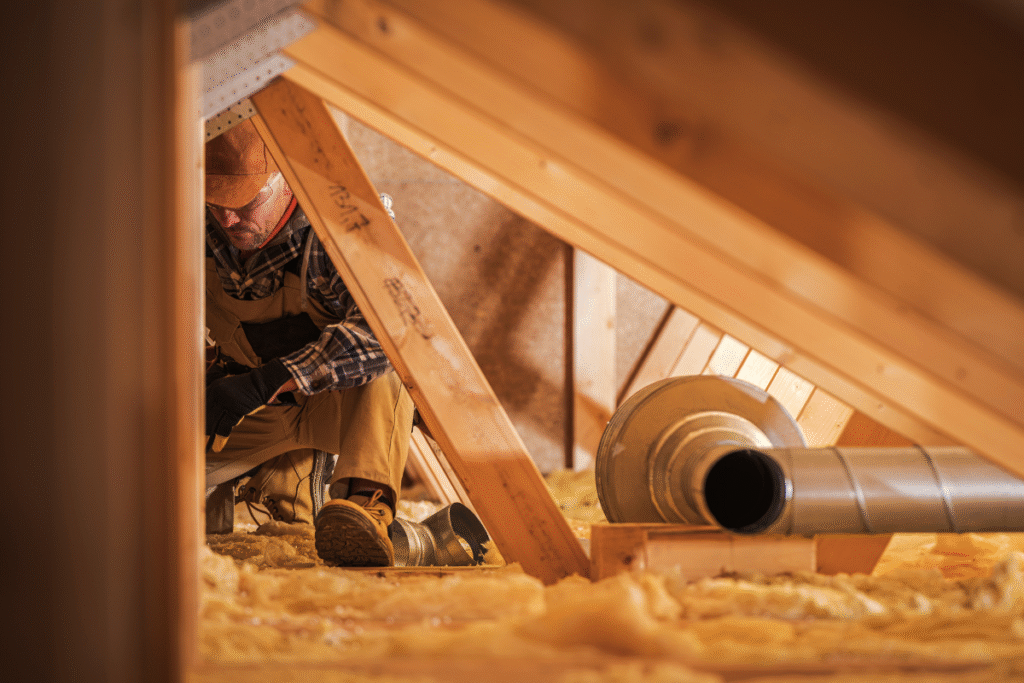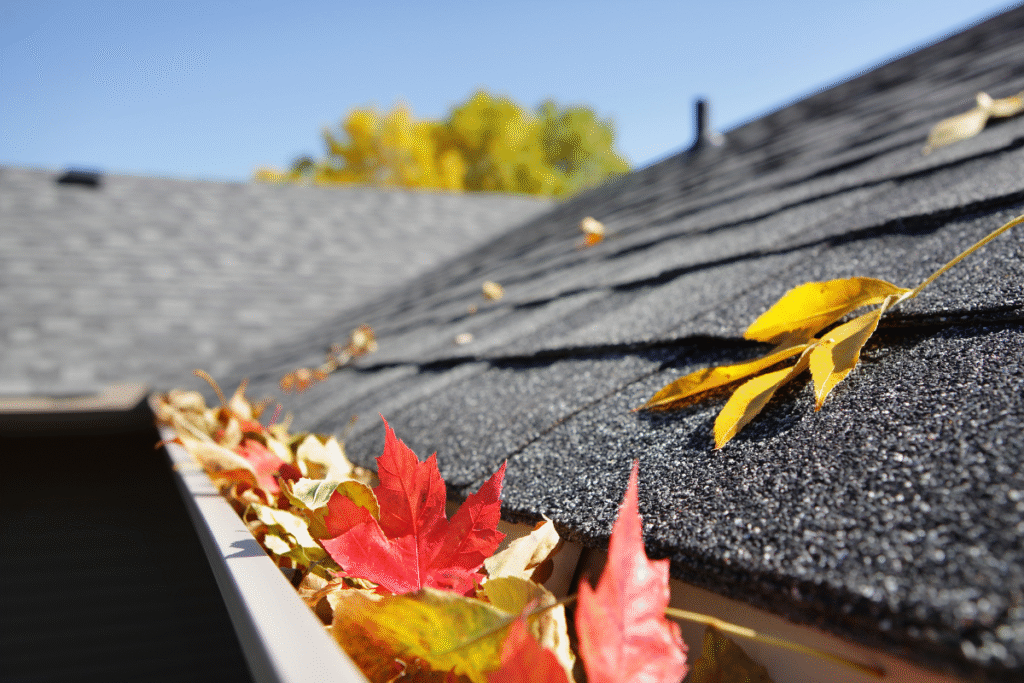Florida roofs take a beating long before winter arrives. Summer storms leave behind hidden cracks, loosened tiles, and clogged gutters that don’t always appear until the next big weather shift. Fall becomes the perfect time to uncover those weak spots and prepare for what’s coming.
Moisture, salt air, and constant heat make local roofing challenges different from those in other parts of the country. Experienced roofers in Pinellas County, FL, know how to catch problems early and protect homes against the harsh mix of rain and wind that marks seasonal fronts.
Mitchell Roofing Company uses fall inspections to create a clear picture of roof health so leaks or costly surprises don’t blindside homeowners.
Keep reading to learn how a fall inspection sets the stage for stronger protection during Florida’s early winter storm fronts.
Finding Hidden Hurricane Scars
Hurricane season leaves behind damage that is easy to miss. Tiny cracks in shingles or tiles look harmless at first, but weaken the roof over time. A fall inspection helps catch these scars before they lead to major leaks.
Moisture from heavy rains seeps into cracks and spreads under the surface. Salt air in coastal areas makes this damage worse and speeds up decay. Roofers trained to spot early signs of wear can prevent costly repairs later.
Wind during winter storms puts extra pressure on weakened areas. Small flaws then grow into gaps that let water inside your home. Fixing these hidden scars early keeps your roof strong through the colder months.
Pinpointing Weak Flashing Joints
Heavy Florida rains expose weak flashing around chimneys, skylights, and vents. Even a small gap lets water creep under the roof surface. Fall inspections make sure these spots are sealed tight before the season shifts.
Loose flashing creates an easy path for leaks that spread quickly inside a home. Early detection keeps repairs simple and avoids significant water damage. Mitchell Roofing Company checks each joint with care so nothing is overlooked.
Winter fronts bring strong winds that push rain into any open seam. Experienced roofers in Pinellas County, FL, know how to secure flashing against that pressure. Their work helps homeowners face sudden storms with confidence.
Inspecting for Salt Air Corrosion
Salt in the Gulf breeze reaches rooftops even miles inland. Metal fasteners, flashing, and vents face slow corrosion that weakens waterproofing long before leaks appear. A fall inspection ensures these hidden risks are under control before winter storms arrive.
Here are the key areas roofers focus on when checking for salt air damage:
- Fastener Integrity – Small screws and nails corrode faster than larger pieces of metal. Inspectors check for rust stains around nail heads that signal the start of roof failure.
- Flashing Seals – Corroded flashing separates from shingles or tiles. This creates gaps where water forces its way under the roof deck during high winds.
- Metal Vents and Caps – Roof vents and caps rust on their edges where coatings wear thin. Once exposed, these weak points give moisture a direct path inside the attic.
- Gutter Attachments – Brackets holding gutters often show early rust spots. When they fail, gutters pull away from the roof and let water pour directly onto walls and foundations.
Early action against salt corrosion keeps repairs small and helps roofs stand strong through Florida’s harsh winter weather.
Clearing Coastal Debris from Drainage Paths
After months of storms, palm fronds, oak leaves, and salt grit pile up in gutters. These blockages stop water from moving off the roof and send it under the shingles instead. Fall cleaning clears the way before December rains arrive in force.
Clogged gutters put extra weight on the roof edge and can pull sections loose. Water then pours down the walls and seeps into the foundation. Mitchell Roofing Company removes this buildup so homes stay protected through the season.
Debris builds faster near the coast, where winds carry salt and sand inland. Roofers in Pinellas County, FL, understand how local conditions affect drainage. Their inspections and cleanings keep water flowing where it belongs during the hardest rains.
Measuring Granule Loss from Shingles
Shingles rely on their protective granules to shield against heat and rain. When storms strip those particles away, the roof surface becomes exposed. Inspectors often find piles of grit in gutters that signal the first stage of wear.
Once granules are gone, shingles begin to absorb water instead of deflecting it. The soaked material weakens quickly, leaving the roof vulnerable to curling and cracks. Tackling these spots in the fall keeps homes safer through winter.
Granule checks also help predict how much life remains in the roof. This simple step gives homeowners a timeline for future repairs or replacements. Staying ahead of the damage reduces surprise costs and keeps roofs working longer.
Tightening Loose Ridge Caps
Ridge caps sit at the highest point of a roof and face constant stress from shifting winds. When these pieces loosen, they leave seams exposed to water. A fall inspection ensures each cap is fastened tightly before storms grow stronger.
Even a small gap along the ridge can turn into a major leak during heavy rain. Water slips beneath shingles and spreads across the roof deck. Mitchell Roofing Company reinforces these weak spots so they hold firm against winter weather.
Wind gusts are strongest at the roof peak, and loose caps are the first to lift. Securing them early prevents costly damage inside the home. Strong ridge caps give the entire roof a better chance against sudden squalls.

Evaluating Ventilation for Humid Fall Nights
Cooler fall evenings in Florida bring higher humidity levels into attics. Condensation collects on beams and insulation without proper airflow, creating the perfect environment for wood decay and mold.
Autumn roof inspections focus on how well air circulates through vents. Roofers in Pinellas County, FL, know that balanced ventilation keeps moisture moving out before it causes long-term structural damage.
Checking Intake Vents
Soffit vents supply fresh air into the attic. If they are blocked by insulation or debris, circulation slows and humidity lingers. Inspectors confirm openings are clear so air enters freely.
Assessing Exhaust Vents
Ridge and gable vents push warm, damp air out of the attic. When these vents are undersized or clogged, moisture stays trapped. Roofers measure airflow to ensure exhaust keeps pace with intake.
Inspecting Insulation Gaps
Gaps in insulation around vents create uneven airflow. These weak spots cause condensation to form in concentrated areas. Proper sealing keeps moisture from pooling in hidden corners.
Testing Airflow Balance
Ventilation works only if intake and exhaust are balanced. Too much of one side disrupts circulation and leaves stagnant air behind. Inspectors use tools to measure pressure and confirm the system is working efficiently.
Assessing Skylight Seal Integrity
Florida’s intense sun breaks down skylight seals faster than most homeowners expect. Once the gaskets shrink or crack, rainwater slips through even during light showers. A fall inspection spots these weak edges before cooler weather makes the damage worse.
Leaking skylights often leave stains on ceilings and can damage drywall. Inspectors reseal joints to stop water from finding its way inside. Taking action early protects the roof and the rooms beneath it.
Identifying Sagging Roof Deck Sections
Uneven roof lines often point to deeper problems within the decking. Soft plywood or weakened framing shifts under pressure and creates dips that are easy to miss from the ground. Fall checks reveal these warning signs before severe weather makes them worse.
Water intrusion is the most common reason roof decks begin to sag. As moisture lingers, boards lose their strength and start bending under normal loads. Repairs made during the drier months stop this cycle and extend the roof’s lifespan.
Experienced roofers in Pinellas County, FL, use trained eyes to catch sagging that escapes casual inspection. They evaluate the full structure, from rafters to fasteners, to confirm everything holds steady. Their work helps homeowners avoid expensive rebuilding after a storm.
Checking Around HVAC Rooftop Units
Mounted AC systems put constant stress on commercial roofs. Flashing and curb joints around these units often shift and open small gaps that let water in. A fall inspection makes sure these seals are strong before winter storms arrive.
Leaks near rooftop HVAC systems spread quickly because water collects around the base. Rust and pooling can damage both the roof and the equipment. Careful checks in the fall prevent expensive repairs and keep systems running smoothly.
Spotting Early Signs of Mold Growth
Moist fall air in Florida fuels the start of mold patches on rooftops. These colonies weaken shingles and spread faster than many homeowners realize. A seasonal inspection identifies and stops early growth before larger sections are damaged.
The first warning signs professionals look for include:
- Discolored Shingle Surfaces – Dark streaks across shingles point to active mold or algae. Left unchecked, these stains signal the spread of organisms that shorten roof life.
- Musty Odors in Attics – Damp smells inside the attic often mean mold grows beneath the roof deck. Inspectors trace odors to hidden colonies before they expand.
- Soft or Damp Spots – Shingles that feel spongy underfoot indicate water absorption and early mold activity. These areas need quick attention to prevent widespread rot.
Early detection and treatment of mold keeps roofing materials strong and protects the home from costly interior repairs.
Examining Hidden Valleys for Debris Buildup
Roof valleys handle the heaviest flow during storms and collect more debris than flat sections. Pine needles, leaves, and grit settle into these channels, slowing water movement. Inspections in the fall remove the buildup, so valleys stay clear when rains intensify.
Clogged valleys force water to push sideways under shingles instead of draining off the roof. That trapped moisture leads to leaks and accelerates wood rot beneath the surface. Clearing these problem areas in advance keeps the structure secure through winter weather.
Creating a Seasonal Maintenance Record
A seasonal record gives homeowners a clear picture of roof condition before winter storms hit. Notes and photos collected in the fall make it easier to spot changes after severe weather. This documentation provides proof when filing insurance claims.
Keeping a log also helps plan repairs in order of urgency. Small issues like minor leaks or loose flashing can be tracked until they require attention. Major concerns, such as sagging sections, should be moved to the top of the list for immediate action.
Mitchell Roofing Company provides detailed inspection reports that simplify this process. Their records outline roof health and highlight areas that need close watch. Homeowners gain peace of mind knowing they have a reference for future maintenance and repairs.
Protect Your Home with Experienced Roofers in Pinellas County, FL
A fall inspection is more than a seasonal task: it safeguards against the storms that test your roof’s limits. Mitchell Roofing Company gives homeowners the confidence that their roof is ready for whatever weather comes next. Scheduling now ensures you stay ahead of costly problems when winter fronts move in.
Key Takeaways
Why are fall roof inspections important in Florida?
Fall inspections uncover hidden storm damage before winter fronts arrive. They help homeowners avoid leaks, costly repairs, and structural problems when seasonal storms hit.
What roof problems do Florida’s storms leave behind?
Cracked shingles, loose flashing, sagging decks, and clogged valleys are common after summer weather. Inspections in the fall reveal these weak points so they can be fixed early.
How does salt air affect Florida roofs?
Salt carried inland corrodes fasteners, flashing, vents, and gutter brackets. Addressing corrosion in the fall prevents leaks and keeps the roof watertight during heavy rains.
What areas of the roof need the most attention during inspections?
Roofers check flashing around chimneys, skylights, vents, ridge caps, valleys, and drainage paths. These areas face the most stress from wind, rain, and debris.
How do roofing companies document seasonal inspections?
Companies like Mitchell Roofing Company provide written reports with notes and photos. These records help track roof health, prove storm impact, and guide repair priorities.

